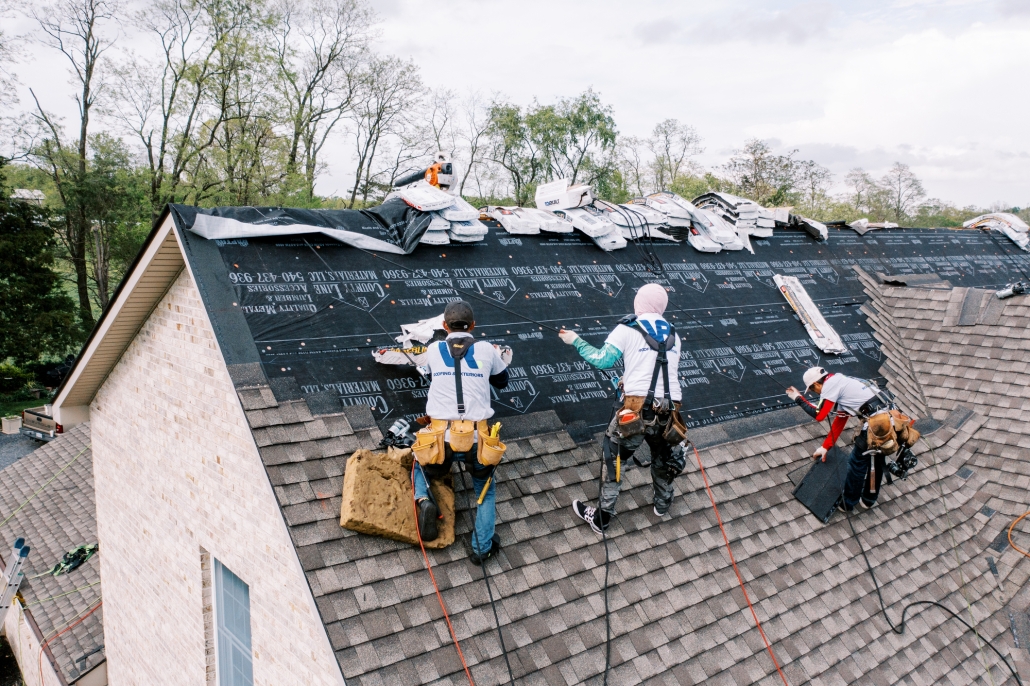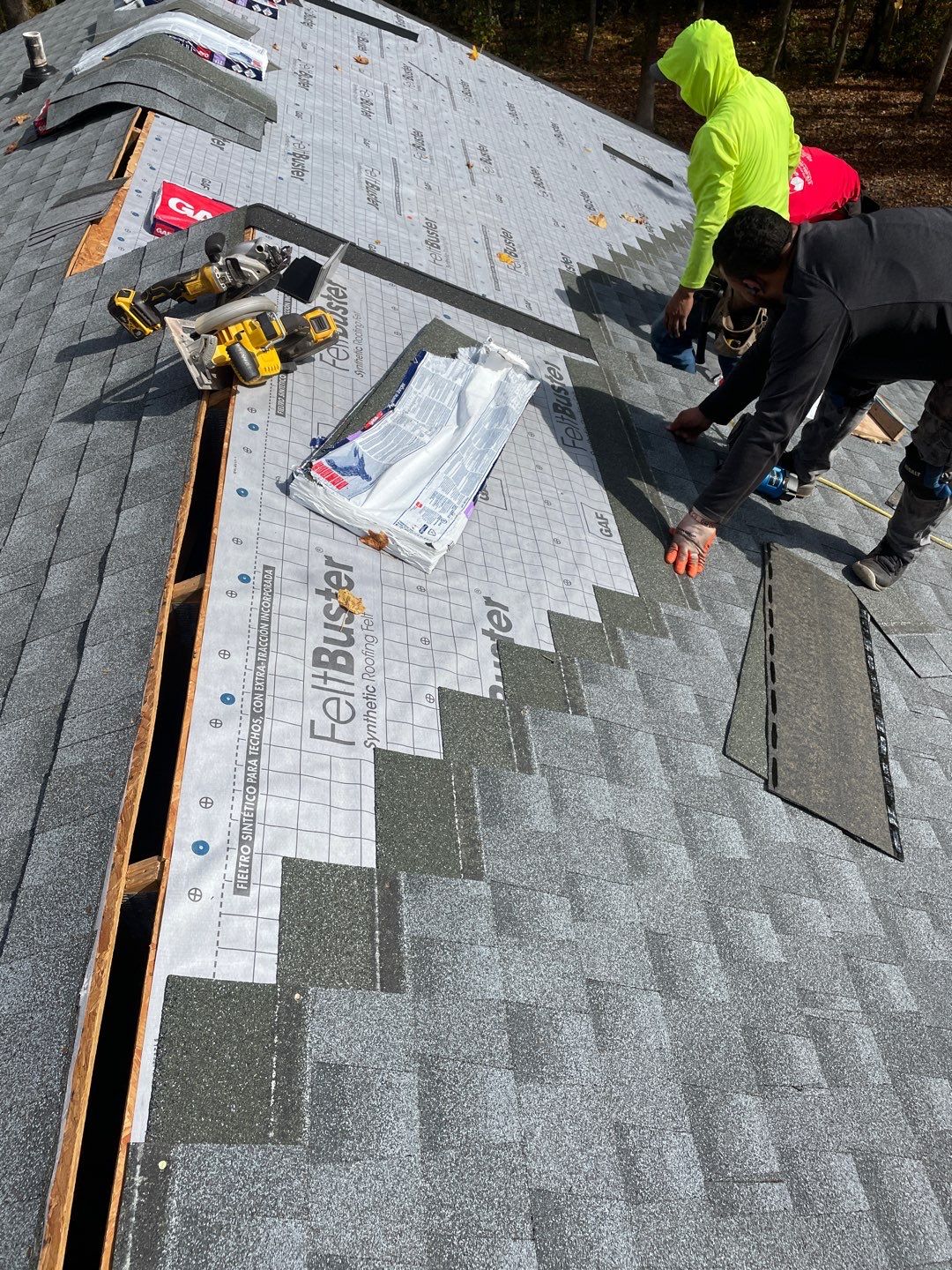A Comprehensive Check Out Roofing Companies Gainesville Homeowners Recommend
A Comprehensive Check Out Roofing Companies Gainesville Homeowners Recommend
Blog Article
Ideal Practices for Ensuring Appropriate Roof Air Flow
Guaranteeing proper roof covering ventilation is essential for the durability and efficiency of a roofing system. A balanced intake and exhaust air vent ratio, typically 1:300, plays a pivotal duty, with consumption vents preferably put at the reduced side of the roofing for great air entrance and exhaust vents at the optimal for warm air exit. Regular assessments to identify obstructions and preserve clear airflow are extremely important. Keeping insulation away from vents is critical to avoid air movement restriction. Comprehending these fundamental aspects sets the stage for even more thorough understandings right into installment and upkeep techniques that can substantially boost your roofing system's performance.
Understand Ventilation Basics
Properly understanding air flow fundamentals is vital for ensuring the long life and performance of roofing systems. Efficient ventilation mitigates dampness build-up and temperature extremes in the attic, both of which can cause significant structural damage over time. A well-ventilated roofing helps in protecting against typical concerns such as mold development, wood rot, and ice dams, which can endanger the honesty of the roofing products and the underlying frameworks.
The key objective of ventilation is to assist in the motion of air, permitting for a constant exchange between the exterior and interior atmospheres. This equilibrium is attained via a mix of consumption and exhaust vents that function with each other to preserve optimum airflow. Consumption vents, typically situated along the soffits or eaves, allow fresh air to go into the attic space, while exhaust vents, frequently positioned at or near the roof covering ridge, allow warm, humid air to escape.
Trick aspects affecting the efficiency of roofing system ventilation include proper positioning, appropriate sizing, and ensuring that both consumption and exhaust vents are unblocked. Normal inspection and upkeep are vital to identify prospective blockages, damages, or ineffectiveness in the air flow system, thus safeguarding the roofing's performance and resilience.
Sorts Of Roof Vents
Roofing vents play a vital role in preserving reliable attic ventilation and, by extension, the total health of the roof. Various kinds of roof vents are readily available, each with special benefits tailored to certain roofing requirements. Ridge vents, for instance, are installed along the roofing's peak, enabling cozy, humid air to get away from the attic room. They provide continual ventilation and blend flawlessly with the roofline, making them both efficient and cosmetically pleasing.

Soffit vents are installed under the eaves and operate in tandem with roof covering vents to make certain a balanced intake and exhaust system. By enabling cooler air to enter from below, soffit vents assist in the expulsion of warm air via upper vents. Gable vents, situated on the outside wall surfaces of the attic, offer an additional reliable remedy, particularly in homes with gable roofs.
Analyze Your Current Air Flow

Following, consider the age and condition of your roofing products and ventilation components. Older systems may not adhere to current building regulations or might have worn away gradually, decreasing their performance. Conduct a detailed exam to recognize any type of indicators of damage, such as rust, damages, or voids that could jeopardize the system's efficiency.
Furthermore, gauge the attic room temperature and humidity degrees. High temperature levels and moisture can suggest insufficient air flow.
Installation Best Practices
Efficient setup of roofing ventilation systems is critical for ensuring ideal performance and longevity. Correct installation begins with understanding the particular ventilation requirements of the building and the roof covering it covers. This involves computing the correct ratio of intake to wear down vents, generally sticking to the 1:300 regulation, which specifies one square foot of air flow for each 300 square feet of attic room flooring area.

The positioning of vents is equally crucial. Intake vents must be mounted at the roof covering's lower edge, often in the soffits, to permit trendy air to enter. Exhaust vents, on the other hand, should be set up near or at the roof's peak to promote the exit of warm, wet air. This creates an all-natural airflow that aids keep temperature level and moisture balance within the attic room area.
Seal all vent links meticulously to protect against air leakages and prospective water seepage. Use high-grade materials and adhere to producer standards to guarantee toughness and effectiveness. Furthermore, integrating ridge vents with baffles can dramatically boost air movement effectiveness by avoiding wind-driven rainfall and snow from going into the attic room.
Ultimately, exact installation of roofing air flow systems reduces prospective issues such as mold and mildew growth, ice dams, and structural damages, ensuring the roof's integrity and the structure's overall health.
Normal Upkeep Tips
Uniformity in maintenance techniques is essential to making sure the long-lasting performance of roof air flow systems. Routine examinations are critical, preferably performed biannually-- in the spring and loss. Throughout these inspections, make certain that vents are without particles, nests, and other obstructions that could hamper air flow. Examine for any type of signs of moisture buildup or mold, as these can suggest improper ventilation or leaks (roofing companies in gainesville find out here now florida).
Use a soft brush or a vacuum to remove dust and particles from intake and exhaust vents. Be careful not to harm the air vent screens or louvers during the procedure.
Correct insulation is similarly crucial. Ensure that attic insulation does not block the vents, as this can badly restrict air movement. Rearrange or replace it to preserve a reliable obstacle. if any reference type of insulation has moved or resolved.
Finally, replace any kind of damaged or missing out on parts quickly. Damaged vents, broken shingles, or scrubby flashing can all contribute to inadequate air flow and should be attended to immediately. Regular maintenance makes sure that the roofing ventilation system functions efficiently, therefore expanding the life-span of the roof covering itself.
Conclusion
Making sure appropriate roof covering ventilation is critical for preserving the efficiency and toughness of a roof system. Adherence to the 1:300 consumption and exhaust air vent ratio, paired with the calculated placement of vents, is crucial. Routine semiannual evaluations, particles cleaning, and ensuring insulation does not block air movement are crucial methods. Implementing these finest techniques will certainly cultivate a well-ventilated roof, thereby alleviating potential concerns connected to moisture buildup and excessive warm, eventually prolonging the roof's lifespan.
A balanced consumption and exhaust vent ratio, commonly 1:300, plays a critical role, with consumption vents preferably placed at the reduced side of the roof covering for trendy air entry and exhaust vents at the top for cozy air departure. Intake vents, generally located along the eaves or soffits, allow fresh air to go into the attic space, while exhaust vents, typically situated at or near the roofing ridge, enable warm, damp air to leave.
Soffit vents are mounted under the eaves and job in tandem with roof covering vents to guarantee a well balanced consumption and exhaust system. By permitting cooler air to go into from below, soffit vents facilitate the expulsion of hot air through upper vents. Adherence to the 1:300 intake and exhaust vent proportion, combined with the strategic placement of vents, is vital.
Report this page